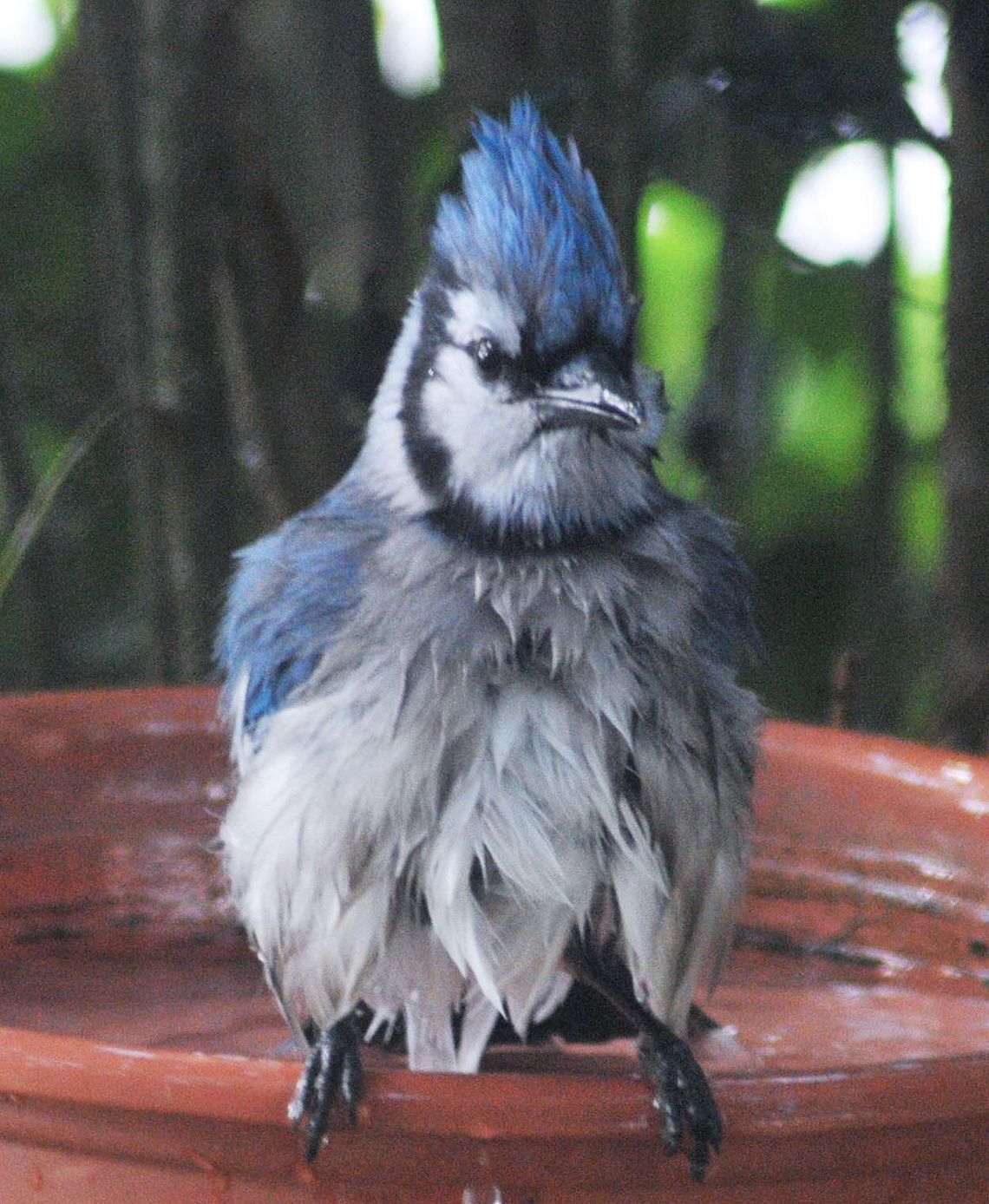Blue jays are known for their intelligence and complex social systems with tight family bonds. The common large songbird has a perky crest, and blue, white and black plumage.
Blue jays have a large variety of calls that carry long distances. They stuff food items in a throat pouch to save, and when eatingm hold the seed or nut in their feet and peck it open. A favorite food is acorns. Their fondness for acorns is credited with helping spread oak trees after the last glacial period. In my yard habitat, I treat them with shell peanuts, but most of their diet is insects and nuts.
Some individual jays migrate south one year, stay north the next winter, and migrate south again the next year. No one has worked out why they migrate when they do. A family has anchored in our neighborhood.
Blue jays frequently mimic the call of hawks, especially the red shouldered hawk. The calls may provide information to other jays that a hawk is around, or may be used to deceive other species into believing a hawk is present. I have heard them do this in my yard. I have also heard them call for food and peanuts.
A blue jay is a symbol of communication, intelligence and curiosity. The bird may also symbolize protection and fearlessness. If a jay appears in your life, you will feel safe. Their characteristic “jay” call warns others of predators. Blue jays are highly beneficial to other flora and fauna in their ecosystem.
Blue jays can be very aggressive towards other birds. Like squirrels, blue jays are known to hide nuts for later consumption. A usual amount of eggs in a nest is 4-5, but can number 3-7. Both males and females incubate the eggs for 16-18 days, and both parents bring food for nesting. Younglings leave the nest 17-21 days after hatching. Male and female blue jays are almost identical in appearance. Males are just slightly larger than females. Blue jays are smart to find water to cool off during extreme hot days, such as our recent hot July days.








